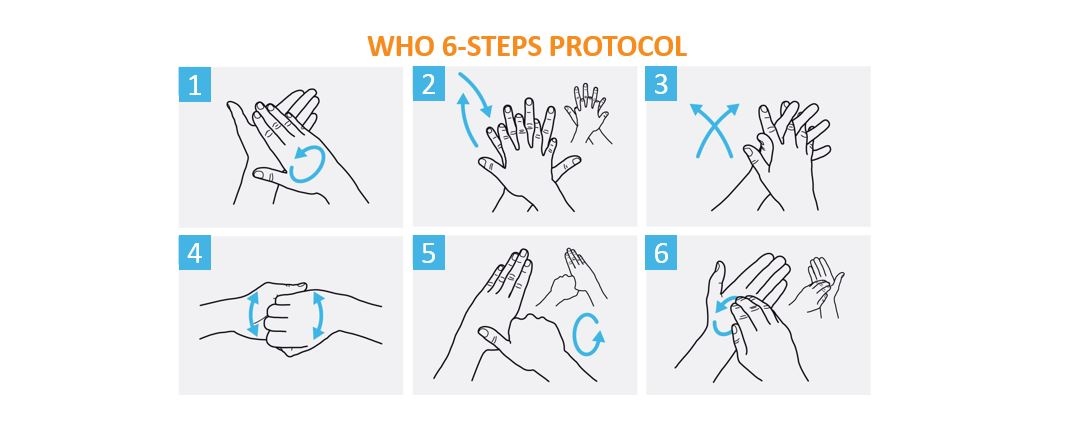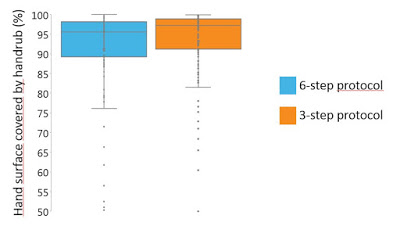Many techniques exist how to handrub, most of them are based on the so-called WHO 6-step protocol. As we previously summarized, this has limitations; it takes long to perform, quite hard to remember and therefore its compliance is pretty low. For these reasons, several alternative protocols exist, but we have limited data on the efficacy of these alternatives.
In our study, we compared the 6-step protocol with one of the most promising alternative techniques, the 3-step protocol suggested by Tschudin-Sutter et al. 2017. This preserves the last two steps of the 6-steps protocol, that are focusing on thumbs and fingernails. As a first step, it only requires to “cover all surfaces of the hands”. Tschudin-Sutter et al. 2017 compared the two protocols by measuring the bacterial reduction factors achieved, and found that the simplified 3-steps method was even more efficient. A shorter protocol can make hand hygiene education more effective and also can result in improved compliance.


In our study, we measured the hand hygiene performance with the Semmelweis Scanner. Using 1.5 ml handrub, volunteer non-clinician participants were asked to precisely follow one of the protocols. Percentage of handrub-covered hand surface was determined.
211 hand hygiene events were recorded (3-step: n=103, 6-step, n=108). No significant difference was found between the efficacies of the protocols. Participants who performed the 6-step protocol covered 91 ± 11 % of their hands (mean ± standard deviation). Applying the alternative, 3-step protocol, coverage was almost the same, 93 ± 9 %.

Our study had several limitations, and definitely requires further evaluation.
Our method is able to measure handrub-covered hand surfaces, and thus, it is a suitable method to compare the efficacies of different protocols. This method is relatively quick and cost effective, allowing to handle large sample size.